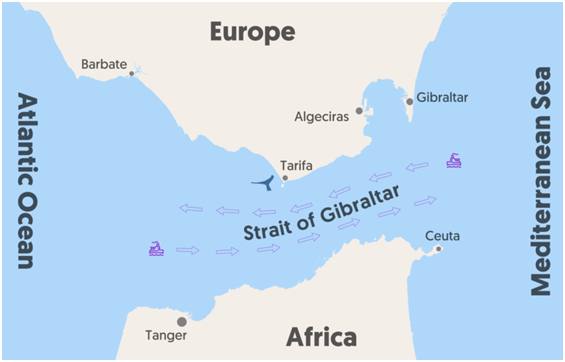





Disclaimer: Copyright infringement not intended.
Context
About Strait of Gibraltar
|
PRACTICE QUESTION Examine the geopolitical significance of the Strait of Gibraltar in the context of international trade, maritime security, and regional stability. |






© 2025 iasgyan. All right reserved